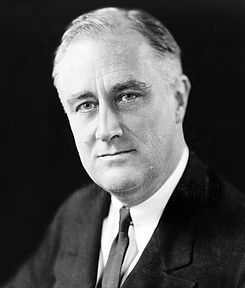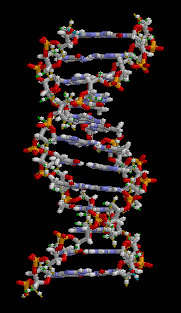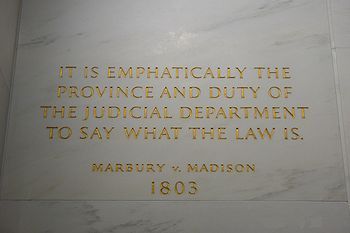Cross posted from The Stars Hollow Gazette
This is your morning Open Thread. Pour your favorite beverage and review the past and comment on the future.
Find the past “On This Day in History” here.
March 6 is the 65th day of the year (66th in leap years) in the Gregorian calendar. There are 300 days remaining until the end of the year.
On this day in 1857, the US Supreme Court hands down its decision on Sanford v. Dred Scott, a case that intensified national divisions over the issue of slavery.
Dred Scott v. Sandford, 60 U.S. 393 (1857), was a ruling by the U.S. Supreme Court that people of African descent imported into the United States and held as slaves (or their descendants, whether or not they were slaves) were not protected by the Constitution and could never be U.S. citizens. The court also held that the U.S. Congress had no authority to prohibit slavery in federal territories and that, because slaves were not citizens, they could not sue in court. Furthermore, the Court ruled that slaves, as chattels or private property, could not be taken away from their owners without due process. The Supreme Court’s decision was written by Chief Justice Roger B. Taney.
Although the Supreme Court has never overruled the Dred Scott case, the Court stated in the Slaughter-House Cases of 1873 that at least one part of it had already been overruled by the Fourteenth Amendment in 1868:
The first observation we have to make on this clause is, that it puts at rest both the questions which we stated to have been the subject of differences of opinion. It declares that persons may be citizens of the United States without regard to their citizenship of a particular State, and it overturns the Dred Scott decision by making all persons born within the United States and subject to its jurisdiction citizens of the United States.
The Supreme Court ruling was handed down on March 6, 1857, just two days after Buchanan’s inauguration. Chief Justice Taney delivered the opinion of the Court, with each of the concurring and dissenting Justices filing separate opinions. In total, six Justices agreed with the ruling; Samuel Nelson concurred with the ruling but not its reasoning, and Benjamin R. Curtis and John McLean dissented. The court misspelled Sanford’s name in the decision.
The Court first had to decide whether it had jurisdiction. Article III, Section 2, Clause 1 of the U.S. Constitution provides that “the judicial Power shall extend… to Controversies… between Citizens of different States….” The Court held that Scott was not a “citizen of a state” within the meaning of the United States Constitution, as that term was understood at the time the Constitution was adopted, and therefore not able to bring suit in federal court. Furthermore, whether a person is a citizen of a state, for Article III purposes, was a question to be decided by the federal courts irrespective of any state’s definition of “citizen” under its own law.
Thus, whether Missouri recognized Scott as a citizen was irrelevant. Taney summed up,
Consequently, no State, since the adoption of the Constitution, can by naturalizing an alien invest him with the rights and privileges secured to a citizen of a State under the Federal Government, although, so far as the State alone was concerned, he would undoubtedly be entitled to the rights of a citizen, and clothed with all the rights and immunities which the Constitution and laws of the State attached to that character.
This meant that
no State can, by any act or law of its own, passed since the adoption of the Constitution, introduce a new member into the political community created by the Constitution of the United States.
The only relevant question, therefore, was whether, at the time the Constitution was ratified, Scott could have been considered a citizen of any state within the meaning of Article III. According to the Court, the authors of the Constitution had viewed all blacks as
beings of an inferior order, and altogether unfit to associate with the white race, either in social or political relations, and so far inferior that they had no rights which the white man was bound to respect.
The Court also presented a parade of horribles argument as to the feared results of granting Mr. Scott’s petition:
It would give to persons of the negro race, …the right to enter every other State whenever they pleased, …the full liberty of speech in public and in private upon all subjects upon which its own citizens might speak; to hold public meetings upon political affairs, and to keep and carry arms wherever they went.
Scott was not a citizen of Missouri, and the federal courts therefore lacked jurisdiction to hear the dispute.
Despite the conclusion that the Court lacked jurisdiction, however, it went on to hold (in what Republicans would label its “obiter dictum”) that Scott was not a free man, even though he had resided for a time in Minnesota (then called the Wisconsin Territory). The Court held that the provisions of the Missouri Compromise declaring it to be free territory were beyond Congress’s power to enact. The Court rested its decision on the grounds that Congress’s power to acquire territories and create governments within those territories was limited. They held that the Fifth Amendment barred any law that would deprive a slaveholder of his property, such as his slaves, because he had brought them into a free territory. The Court went on to state – although the issue was not before the Court – that the territorial legislatures had no power to ban slavery. The ruling also asserted that neither slaves “nor their descendants, were embraced in any of the other provisions of the Constitution” that protected non-citizens.
This was only the second time in United States history that the Supreme Court had found an act of Congress to be unconstitutional. (The first time was 54 years earlier in Marbury v. Madison).



 In this day in 1933, at the height of the Great Depression,
In this day in 1933, at the height of the Great Depression,  On this day in 1887,
On this day in 1887,  On this day in 1836, the
On this day in 1836, the  The Republic of Texas was created from part of the Mexican state
The Republic of Texas was created from part of the Mexican state  On this day in 1961, President John F. Kennedy issues Executive Order #10924,
On this day in 1961, President John F. Kennedy issues Executive Order #10924,  The
The  DNA was first isolated by the Swiss physician
DNA was first isolated by the Swiss physician  On this day in 1827,
On this day in 1827, 

 In 1897 acting Yellowstone superintendent Colonel S.B.M. Young proposed expanding that park’s borders south to encompass the northern extent of Jackson Hole in order to protect migrating herds of elk. Next year,
In 1897 acting Yellowstone superintendent Colonel S.B.M. Young proposed expanding that park’s borders south to encompass the northern extent of Jackson Hole in order to protect migrating herds of elk. Next year,  In 1928, a Coordinating Commission on National Parks and Forests met with valley residents and reached an agreement for the establishment of a park. Wyoming Senator
In 1928, a Coordinating Commission on National Parks and Forests met with valley residents and reached an agreement for the establishment of a park. Wyoming Senator  On this day in Japan, the Plum Blossom Festival is held. The Festival at the
On this day in Japan, the Plum Blossom Festival is held. The Festival at the 
 On this day in
On this day in  On this day in 1954, a group of
On this day in 1954, a group of  By 1910, much of the world experienced a dramatic increase in polio cases and frequent epidemics became regular events, primarily in cities during the summer months. These epidemics-which left thousands of children and adults paralyzed-provided the impetus for a “Great Race” towards the development of a vaccine. Developed in the 1950s, polio vaccines are credited with reducing the global number of polio cases per year from many hundreds of thousands to around a thousand. Enhanced vaccination efforts led by the World Health Organization, UNICEF, and Rotary International could result in global eradication of the disease.
By 1910, much of the world experienced a dramatic increase in polio cases and frequent epidemics became regular events, primarily in cities during the summer months. These epidemics-which left thousands of children and adults paralyzed-provided the impetus for a “Great Race” towards the development of a vaccine. Developed in the 1950s, polio vaccines are credited with reducing the global number of polio cases per year from many hundreds of thousands to around a thousand. Enhanced vaccination efforts led by the World Health Organization, UNICEF, and Rotary International could result in global eradication of the disease.